Increasing efficiencies and lowering costs during the manufacture of space hardware is an important consideration for companies across the industry. This is article discusses the application of 3D printing to achieve such savings and was produced in collaboration with Tiwari Scientific Instruments, an ESA-supported Startup and an additive manufacturing (AM) service provider.
In many ways, 3D printing is a highly applicable solution for manufacturing in the space industry. Although the development of the global market has led to much greater accessibility to commercial-off-the-shelf (COTS) components, and launch costs have significantly decreased in the last decade, mission budgets can still run into the millions of Euros quite easily, depending on the scale and payload size.
Engineers will go to great lengths to try and save every gram possible in the parts the design and simulate. For deeper space missions such changes can quickly add up to significant results.
For example, it can currently cost around €1 million to transport 1 kg to the Moon. Saving 100g on the payload is therefore equivalent to saving €100,000, clearly making a case for greater precision and efficiency in manufacturing.
However, such accurate hardware development is complex. Even as recent as a decade ago there were many component designs that simply could not be created using conventional methods and engineers would look forward to a time when advanced manufacturing would make them possible.
Advances in 3D printing are now making such applications a reality.
An introduction to 3D printing for space
With every space mission being so unique, except in some circumstances where constellations are concerned, there is regular demand for small series of complex, custom parts, that can be manufactured from a range of materials.
This is the primary use case of industrial 3D printing. Such processes are enabling missions to significantly reduce mission timescales – high-quality components can now be created in days, rather than months in some cases.
For example, NASA’s Perseverance Rover, which landed on Mars on the 18th of February 2021, features 11 3D-printed metal part. 5 are incorporated into the Planetary Instrument for X-ray Lithochemistry (PIXL) instrument that is using X-ray analysis to try and detect signs of fossilized microbial life. Although some space agencies are further ahead in terms of standardization and adoption of additive manufacturing, use is growing, and it is hoped that the trend will continue. It is also important to note that additive manufacturing comes in different forms depending on the materials used and desired result.
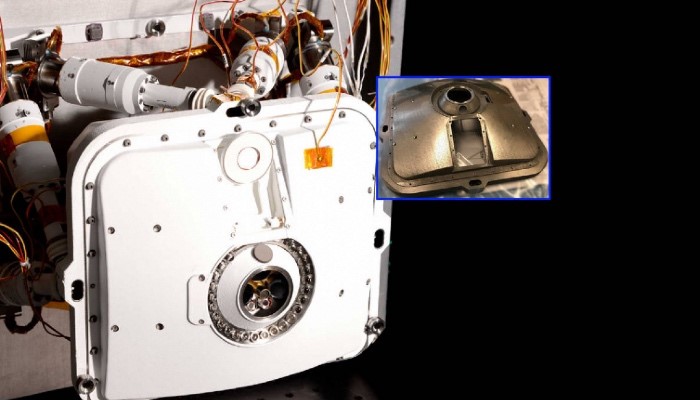
Extrusion-based additive manufacturing (EAM)
Extrusion-based additive manufacturing refers to a method in which either pellets or filaments are extruded through a small nozzle (less than a millimetre in diameter) to make a certain part.
There are two common methods of EAM; Fused Filament Fabrication (FFF), which uses filaments of material, and Pellet Extrusion Printing (PEP), which involves the direct deployment of pellets of material.
FFF typically utilizes the thermoplastic printers which are becoming extremely popular in modern research and manufacturing. FFF involves embedding thermoplastic filaments along with particles of the construction material – like a metal or a ceramic – to produce an initial model or a “green” part, and then using thermal treatment to eliminate the plastic leaving behind the pure metal or ceramic component.
PEP was mainly seen as a direct replacement for injection molding, where the pellets or raw material used for injection molding could be directly used for small series of parts. However, the pellet extrusion mechanism can be extremely complicated and PEP generally requires hardware that costs an order of magnitude more compared to FFF.
FFF on the other hand requires a low initial investment, and the technique has recently seen a resurgence due to the expiry of patents in 2009 that were filed by the American 3DP giants Stratasys in the late 80s.
Initially, these processes focussed almost exclusively on plastics, but metals and ceramics are now widely used.
An example of space additive manufacturing – TIWARI’s RAPTOR
RAPTOR is an AM-based technology designed for the cost-effective production of ceramic and metal parts using the Fused Filament Fabrication (FFF) method.
The process involves specially fabricated metal or ceramic filaments which are shaped into the desired geometry using custom-made in-house FFF printers.
The printed “green parts” may then be machined in order to include further details and to improve surface finishes, after which they are subsequently heat-treated at high temperatures in order to eliminate the binder and to sinter the part. Sintering is the process of creating a solid mass of material by applying heat or pressure, but without melting it.
The RAPTOR produces both metal and ceramic parts with relative density of over 99%.
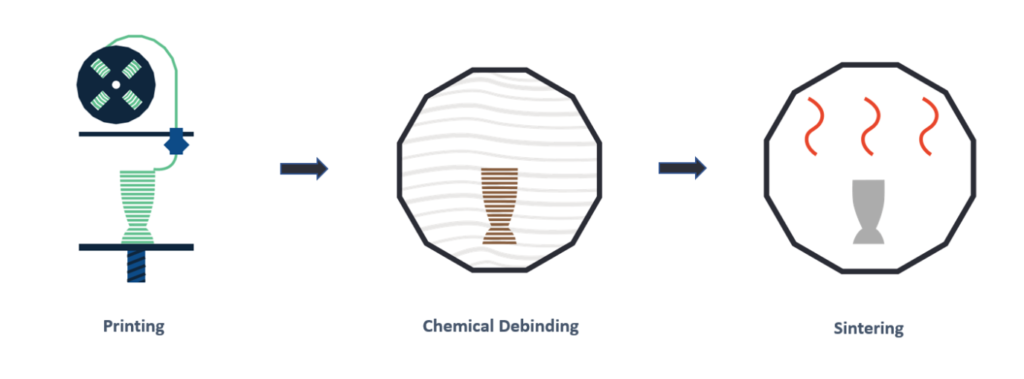
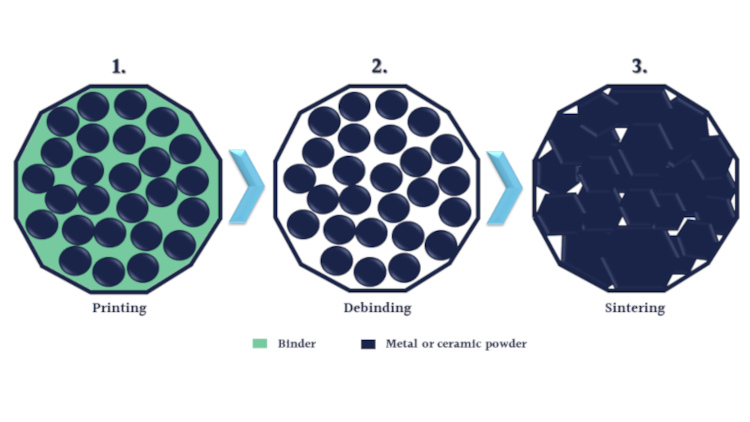
The benefits of additive manufacturing for space technologies
The primary advantages of AM processes for space missions and services are:
Cost-efficient production – as the operational costs of equipment are not high, and due to the fact that many parts can be treated in a single sinter batch, the cost per kg of components can be a magnitude lower than alternative methods, such as Selective laser melting (SLM).
Quality of surface finish – surface finish is another key area where AM methods enjoy advantages over other techniques. With FFF, the parts can be printed with a layer thickness of around 50 μm for example. After sintering, shrinkage results in roughness due to the layer thickness tending to be even lower. In addition, the parts can be manually polished in a “green-state” further reducing the cost associated with post-processing.
High relative density of manufactured parts – while the final density of parts may vary depending upon the kind of material used, most will have densities suitable for industrial applications – though further qualification may be needed before they are flown into space.
TIWARI recently performed a qualification campaign for its metal and ceramics together with the European Space Agency (ESA).
Diversity of materials – several different space-grade materials can be used in pellet or filament form for space applications, including metals and ceramics. To illustrate this, the list below details all of the materials from which it is currently possible to manufacture parts using Tiwari’s RAPTOR system:
Ceramics:
- Alumina (Al2O3)
- Molybdenum Disilicide (MoSi2)
- Silicon Carbide (SiC)
- Silicon Nitride (Si3N4)
- Tungsten Carbide-Cobalt (WC-Co)
- Zirconia (ZrO2)
Metals:
- Copper
- Stainless Steel (316L & 17-4PH)
- Titanium (Ti6Al4V)
The images below show some examples of the different patterns, structures, and components that AM processes can produce.
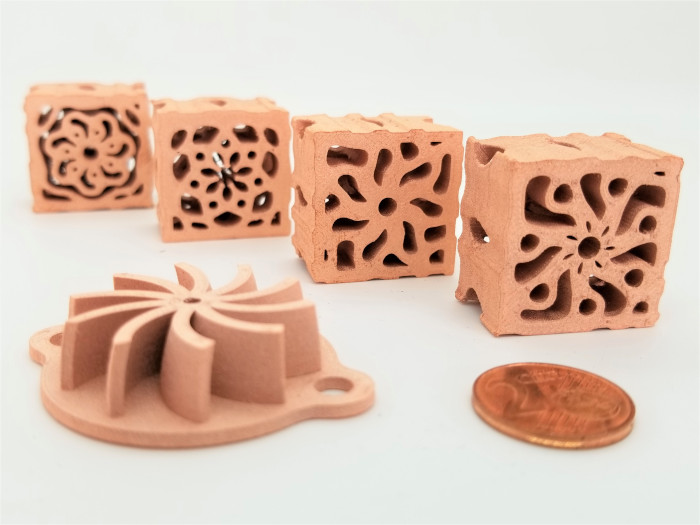
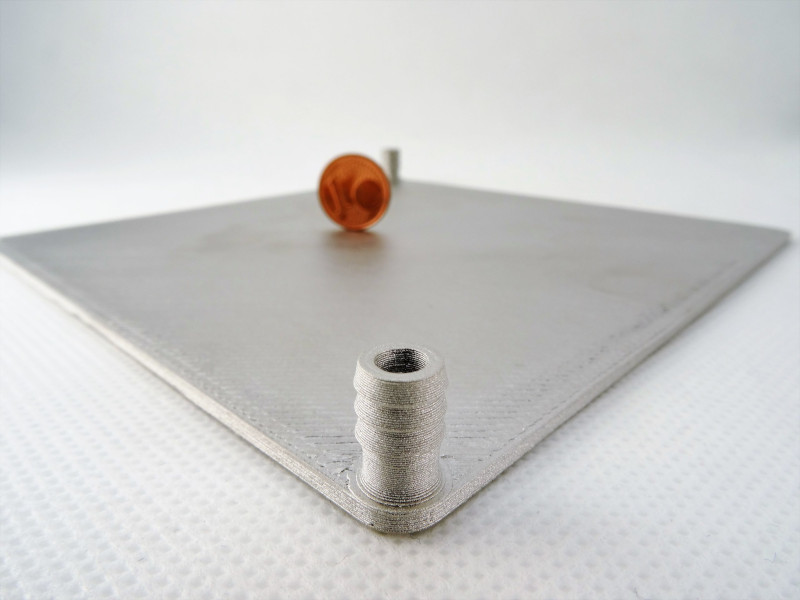
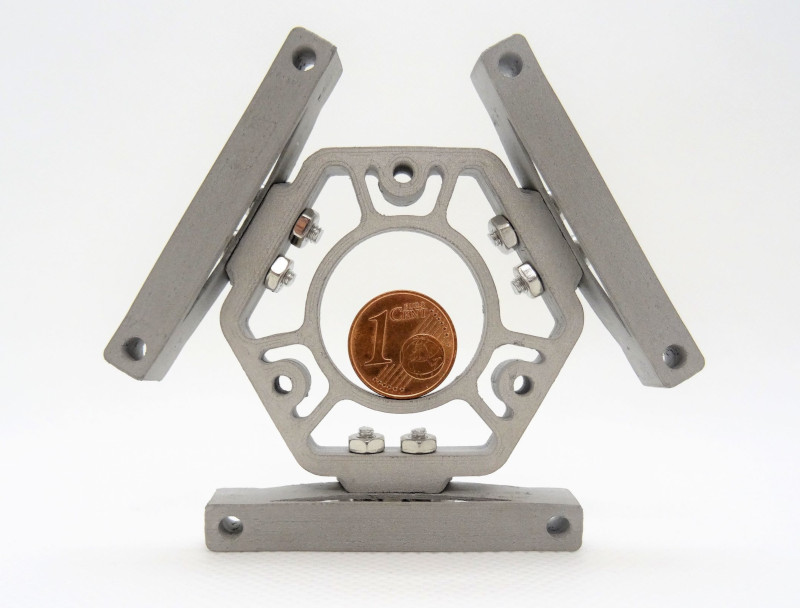

In conclusion: to make or to purchase?
The field of EAM is growing and there are currently a number of system suppliers for complete systems, with the printer, de-binding unit, and furnace included. However, such systems have limited capacity to process certain materials to the required quality levels.
The main reason for this is the furnace. Ceramics and metals have different processing requirements, and it is difficult to sinter both materials with the same furnace. For the best results, a dedicated furnace for each kind of material is needed.
At current prices this would usually mean hundreds of thousands of Euros in investment for the heat treatment stage alone. Because of this, Tiwari believes that the manufacturing within the space industry is becoming increasingly service-oriented; with companies preferring to work with suppliers or sub-contractors providing end-to-end solutions instead of manufacturing on their own.
Regardless of the setup however, additive manufacturing looks set to play an increasingly important role in the space industry (as with many others). And hardware manufacturers should be open to considering the benefits that the technology can bring to their own businesses moving forwards.
To find out more about additive manufacturing service provider Tiwari Scientific Instruments, with whom this article was produced, please view the company’s supplier hub on satsearch.
